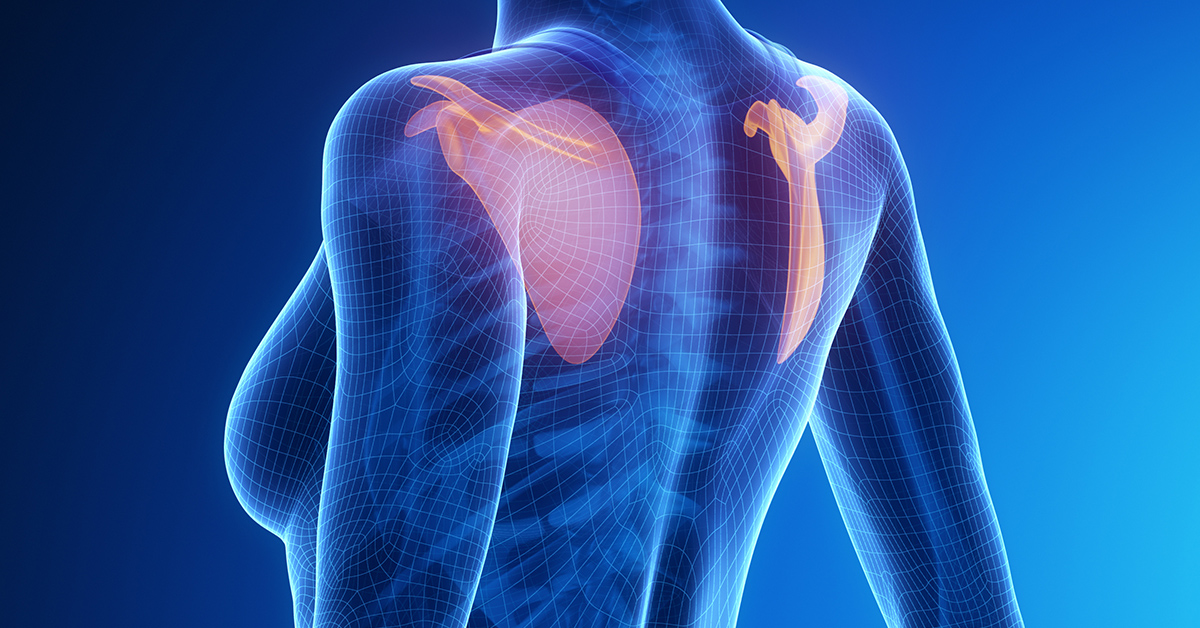Do you know the parts of your shoulder that help you shimmy and shrug?

Shoulder Anatomy
The shoulder allows for a wide range of movement. Any time you shrug your shoulders, raise your hands, or reach for anything, you're taking advantage of the fact that your shoulder joints allow for a lot of movement. This is possible because of bones, ligaments, muscles, and tendons working together in the joints of the shoulder.
The Bones in the Shoulder
There are three main bones in the shoulder. The humerus is the bone in your upper arm. The scapula, or shoulder blade, is the triangular bone on the upper back of the body. The clavicle, or collarbone, is the bone responsible for holding the shoulder out from the body. It also connects the shoulder to the rib cage.
The top portion of the humerus is called the humerus head, and it is covered with smooth cartilage for ease of movement. The humerus head meets the glenoid, a shallow cavity in the scapula. This meeting is covered by the coracoid process and acromion, boney projections of the scapula. The meeting of the humerus and glenoid creates the ball-and-socket joint known as the glenohumeral joint, with the assistance of cartilage and tendons. The glenohumeral joint provides most of the movement in the shoulder, and is often referred to as the shoulder joint, but there are two other joints in the shoulder. The acromioclavicular joint (AC joint) is located above the glenohumeral joint. The acromion and clavicle bones meet in this joint. The sternoclavicular joint (SC joint) is a joint made by the meeting of the clavicle to the sternum, or breastbone.
Soft Tissue in the Shoulder
In the glenohumeral joint, the humerus head is covered smooth cartilage so that movement is possible with as little friction as possible. The rim of the glenoid, where the humerus head is socketed, is rimmed with a ring of fibrous cartilage called the labrum. The labrum serves to help with stability in the shoulder joint by deepening the socket the humerus head nestles in. Several muscles and tendons, referred to as the rotator cuff, keep the humerus correctly positioned in the glenoid and labrum. The bursa is a small sac of lubricating fluid between the acromion and the rotator cuff that works as a cushion and friction-reducer. The biceps muscle has two tendons that connect it to the coracoid process and to the labrum.

